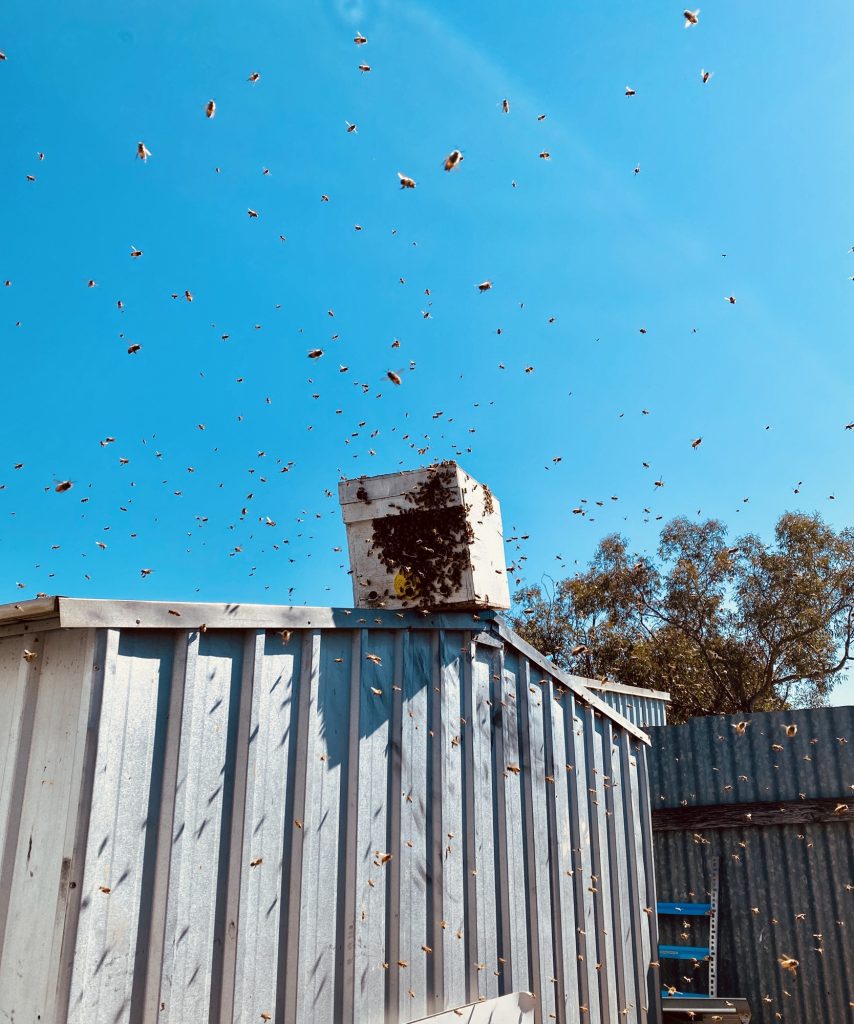
Why Spring is the Best Time to Start Beekeeping in NSW
Spring (September to November) is the peak season for bee activity in NSW. Colonies expand rapidly as flowers bloom, making it the ideal time to:
- Install new hives
- Monitor colony health
- Begin honey production
Spring also gives beginners several months to learn hive management before winter.
Spring Beekeeping Checklist
1. Check Your Equipment
Before bringing bees home, ensure all equipment is ready:
- Hive and frames are clean and in good condition
- Protective clothing fits and is ventilated for NSW spring weather
- Smoker, hive tool, and bee brush are working properly
- Feeders are ready in case of nectar shortages
Link to our Essential Beekeeping Equipment Guide for full details.
2. Register as a Beekeeper
All beekeepers in NSW must register with the DPI. Registration ensures you receive updates on varroa mite management and other biosecurity alerts.
- Display your beekeeper number on your hive
- Keep records of inspections and treatments
- Learn about legal hive placement in your area
See our guide: How to Register as a Beekeeper in NSW.
3. Install Your Hive
When installing:
- Place hives in a sunny location with morning sun and afternoon shade
- Ensure good drainage and wind protection
- Keep hives at least 3 metres from boundaries (check local council regulations)
4. Introduce Your Bees
- Buy healthy nucleus colonies from local NSW suppliers
- Transfer bees carefully to the hive
- Monitor for signs of stress or disease during the first week
5. Conduct Your First Hive Inspection
Check for:
- Brood health: Look for healthy eggs and larvae
- Honey stores: Ensure bees have enough food
- Pests or disease: Varroa mite monitoring is now essential in NSW
- Queen presence: Spot the queen or look for eggs as confirmation
6. Feed If Necessary
- Use a frame or top feeder if nectar flow is low
- Provide a shallow water source nearby
7. Monitor and Record Weekly
- Note hive growth, honey production, and any signs of disease
- Adjust management practices as needed
- Stay connected with local NSW beekeeping clubs for advice
Overcoming Common Beginner Concerns in Spring
- Fear of stings: Spring bees are generally more docile than late summer colonies
- Varroa mite worries: Regular monitoring and early treatment keep colonies healthy
- Hive failure: Beginners may lose hives, but spring provides a long season to recover and learn
Final Thoughts
Spring is an exciting time to start beekeeping in NSW. By following this checklist, beginners can ensure a smooth start, healthy colonies, and productive hives.
Next, read our guide on Best Plants for Bees in NSW to create a pollinator-friendly garden for your hive.
FAQs – Spring Beekeeping in NSW
Q1: When exactly should I start beekeeping in spring?
Start in September, when flowers bloom and temperatures consistently rise above 15°C.
Q2: How often should I inspect my hive in spring?
Inspect once a week during peak growth, more often if you’re checking for varroa mites or swarming signs.
Q3: Do I need to feed my bees in spring?
Not always. Only provide sugar syrup if natural nectar sources are scarce.
Q4: Can I start with more than one hive in spring?
Yes, but beginners usually start with one hive to focus on learning proper management.
Q5: How do I monitor for varroa mites in spring?
Use alcohol wash or sugar shake kits, and place sticky boards under the hive to track mite presence.
Leave a Reply